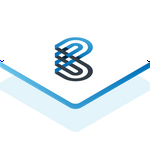Prompt Implementation Guide
 Updated
by Prompt Support
Updated
by Prompt Support
This implementation guide will outline all steps to implement Prompt in your organisation.
Implementing Prompt into your organisation focuses on five key components: subscribe, plan and testing, training and live site setup. Each of the below steps talks to these key components for an optimal roll-out experience.

Subscribe | To implement Prompt into your organisation you must be a health service with a valid Prompt contract. If you have not yet subscribed, please contact us to directly promptinfo@barwonhealth.org.au How long does it take to implement Prompt? Organisational change management takes time, but we are ready to work at your pace. We often understand organisations are already busy with day-to-day responsibilities, so we work with you to implement Prompt on your timeline. | ||||||||||||||||
Plan | Implementing Prompt into your organisation requires some initial planning. The information below is to assist you with change management planning and defining your internal document workflow. A strong change management plan can support implementing effective change, helping people to adapt, transition, and transform goals, processes, and technologies. Below is an example of a change management plan for your consideration.
| ||||||||||||||||
Testing | Prompt will provide your organisation with a user acceptance site (UAT) which is a demonstration site based on your system preferences. To set up the test site, please complete this configuration form. Once submitted, a member of the Prompt team will configure your test site accordingly. Tips and help articles are available throughout the configuration form to assist you with completing the form. If you would like support completing the configuration form, contact us, and we are more than happy to guide you through the form process. | ||||||||||||||||
Training | User Acceptance Testing, often referred to as UAT, is application testing or end-user training. This can also be described as staging or demonstration. UAT is a phase of software development in which the software is tested in the real world by its intended audience, and in this case, your organisation will be provided with a UAT site. This testing site is what will most closely resemble your Prompt site and this 'real world" testing. This is your best chance to see the Prompt system in action and refine your preferences. Your user acceptance testing phase is all about you, and your organisations requirements. This is the space where your early learners can form a close relationship with the platform and refine your unique internal workflows. In UAT, your main focus should be to test that the system is fit for use within your specific user context, making sure the system can support your needs in your real-world organisation. UAT is a safe space for training, testing, and making mistakes. Demonstration sites allow your early learners to get close to the product without risk or impact. There are many different examples and ways of testing your system; you can simply jump in and start using or create a formal document. Once testing is underway, this is often a good time to document the steps for the organisation, allowing you to easily train and support others in their learning journey. There is no set time limit for user acceptance testing; your organisation can define what the timeline looks like. Once your UAT site is up and running, we will contact you to arrange training sessions with the organisation's Prompt Admin(s) and project team to ensure you feel confident and happy to train end-users within your organisation. The demonstration site lets you get familiar with the Prompt system and test your document workflows. In addition to the training sessions, you can access all training materials via the knowledge base, and some editable training materials are available in Prompt as well! There are many different examples and ways of testing your system. You can simply jump in and start using or create a formal document. Below is an example of a basic testing document. Speak with your Prompt specialist to find out how we can support you on your testing journey.
Once testing is underway, this is often a good time to document the steps for the organisation, allowing you to easily train and support others in their learning journey. There is no set time limit for user acceptance testing; your organisation can define what the timeline looks like. | ||||||||||||||||
Live Site Setup | Once testing is complete, our experienced team will deploy your Prompt instance into the production site by replicating your UAT site. Once completed, your organisation can:
The Prompt team will coach and consult your Admins through this process | ||||||||||||||||
Go-Live | When you are ready, you can distribute your organisations Prompt site to the rest of the organisation and complete these final steps to 'Go-Live' with Prompt.
The link to your organisation's instance of Prompt can be accessed via the 'Anonymous User' user account within your Manage User tab in Prompt.
Notify the Prompt team of a date for updating your instance to 'Live'. 'Live' means users within your organisation can access the link and commence searching and downloading documents. Also, permissioned users from other organisations will be able to view your organisation's documents. |
Additional Features | There are several features available in Prompt that your organisation can utilise. We understand that these features require additional resources, training, and change management. Some additional features you may consider utilising in the future are:
Click Here to learn more about In-Drafting.
|
